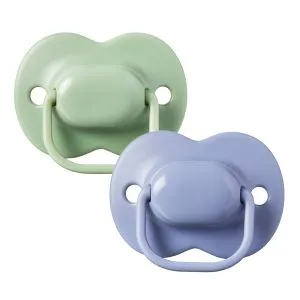The stages of breast milk production
Breast milk is an amazing thing. Not only is it free, available around the clock and natural, but its composition, colour, volume and taste all change as your baby grows, giving them exactly what they need at each stage of development.
It also changes by the hour, literally! For example, in the morning, breast milk contains low levels of an amino acid called tryptophan (a component of the sleep hormone melatonin) and at night, these levels increase! This helps your little one to establish their circadian rhythm of being awake during the day and asleep at night.
Colostrum
Breast milk production begins during pregnancy, several weeks, or even months, before your due date and is triggered by changes in hormone levels. When your baby is first born, you'll produce a small amount of nutrient-rich milk to begin with, which is fine as your little one's stomach is about the size of a marble! This precious stuff is known as colostrum or "liquid gold" - that's because it's packed with protein, growth factors, white blood cells and antibodies that help fight off infections and allergies.
Because it's so full of goodness, colostrum has a thick consistency, and is often golden yellow in colour, and it contains all that your newborn's tiny tummy needs during the first few days post-birth.
Transitional milk
Around five days after birth, the second stage of breast milk production begins, and usually lasts for two or three weeks. You may hear this referred to as your milk "coming in". During this stage of nursing, you'll begin to produce more calorie-rich milk for your little one as they develop a larger appetite, this will help them to gain back some of the weight that they lost after birth.
Seeing as the milk produced in this stage is a mix of colostrum and mature milk, it's colour and consistency can vary and will continue to change as time goes on.
It's common to experience engorgement during this stage, which can be painful and uncomfortable. To relive the symptoms of engorgement, you can use a cold compress to ease swelling, apply a heat pack to help the flow of milk, or try expressing a small amount of breast milk before feeding using a breast pump.
Mature milk
By the time that your little one is about two weeks old, the breast milk you produce is known as mature milk. It's lower in protein but higher in fat and carbohydrates and is often white, light yellow, or blue-tinged in colour. The milk available when your baby starts each feed is known as foremilk and hindmilk is the milk your baby gets at the end of a feed. How much you make adjusts according to your baby's habits and needs.
Mature milk is packed full of everything your baby needs for healthy growth and development for the first six months of their life, and you can continue to breastfeed as your baby begins to explore solid foods. If you or your baby are under the weather, it can adapt to support your baby's immune system. It continues to be produced until you decide to stop breastfeeding, or if you become pregnant again.










